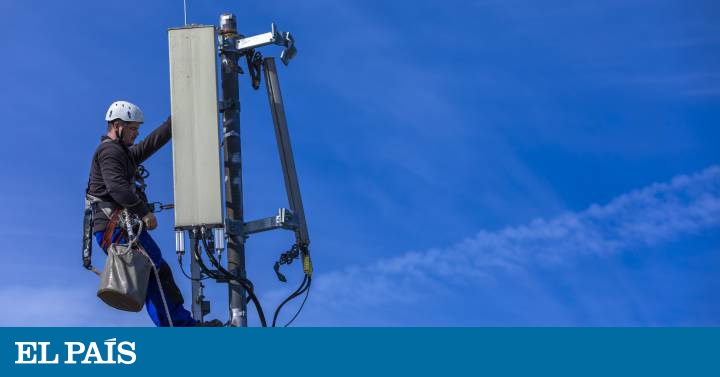The deployment of the 5G network will not increase the risk to people's health. The Scientific Advisory Committee on Radio Frequency and Health (Ccars) has reached this conclusion after evaluating the scientific evidence available to date. In a report published this week, entitled 5G and health , the independent group of medical researchers, physicists and engineers - coordinated by the Official College of Telecommunications Engineers (COIT) - says that “the general population can be calm about the alleged implications that the radio frequency emitted by this technology could have for health ”.
The 5G mobile telephone network has only reached some locations and devices in its test phase, but it is expected that it will eventually replace the current 4G technology. With respect to this, the new network reduces power consumption for every gigabyte of information transmitted and reduces latency, or waiting time, in interactions.
The waves are more energetic than in the 4G network, but they do not have enough energy to damage the DNA molecules
To do this, it uses higher frequency electromagnetic fields, without leaving the spectrum known as non-ionizing radiation. This means that the waves are more energetic than in the 4G network, but they do not have enough energy to damage the DNA molecules and thus cause cancer. More lower power antennas will be necessary to achieve the same coverage as the current 4G network, because, at higher frequencies, the penetration depth of the waves decreases. The presence of more antennas (and closer to people), has raised concerns that the 5G network may have health consequences.
The report responds to these concerns. "As it is a new technology, it is logical that in some social sectors a perception problem is generated," says Francisco Vargas, an epidemiologist and scientific director of Ccars. According to Vargas, the only proven biological effects of non-ionizing radiation are "thermal", that is, the heating of biological matter by absorption of radiated energy. This warming "is minimal or negligible at the usual levels of personal exposure," according to the report.
There is no evidence of cancer
The text recognizes that the possibility of “non-thermal” or unrelated risks of tissue heating is a controversial issue. The International Agency for Research on Cancer (IARC) classified the electromagnetic fields of radiofrequency (non-ionizing) as "possible carcinogens" because "there is evidence that it is inconclusive that exposure can cause cancer in humans."
However, the new report finds no evidence to encourage these concerns. “The only demonstrated effects of exposure to these waves are thermal effects. The non-thermal effects have not been demonstrated, ”Vargas repeated to EL PAÍS. The authors of the report highlight that it is "a living document" that "will have to be reviewed in the light of scientific evidence."
The heating of biological matter by absorption of radiated energy "is minimal or negligible at usual levels of personal exposure," according to the report.
With regard to thermal risks (heating of the skin or biological tissue), scientists consider the reference levels set by the International Commission for the Protection of Non-Ionizing Radiation (Icnirp), an organism recognized by the World Health Organization and consulted by the European Commission. Icnirp sets the safe exposure limits for all non-ionizing electromagnetic waves - and in this category the radio frequency waves proposed for the 5G network fall - based on evidence of thermal risk, always adding a safety margin to the minimum recognized threshold as harmful.
Exposure to radio waves in Spain
The report reviews several studies on exposure to radio frequency electromagnetic fields in Spain: all of them record levels of exposure well below the recommended limits. In fact, most studies and surveillance systems record exposures that are hundreds or thousands of times below the recommendations of the Icnirp. The European Union adopted these reference levels through the Council Recommendation of July 12, 1999 (1999/519 / EC). In Spain, the limits were adopted through Royal Decree 1066/2001, of September 28.
The 5G is being deployed in two phases: the first operates in frequency bands that are already associated with mobile networks. The next one will use millimeter bands (higher frequency waves) that until now had not been used in telephony. All of them are contemplated by current legislation, which the authors consider appropriate to "guarantee public health with respect to electromagnetic emissions".
One of the main characteristics of 5G is that the antennas are selectively oriented according to demand. "It is pending to decide a system for measuring exposure that is reliable and appropriate to this technology," Vargas explains, "but the limits to be met are the same as those established by the Royal Decree." "The Ccars will continue to monitor the results of the studies that are published on the actual levels of exposure of the population," he concludes.



/cloudfront-eu-central-1.images.arcpublishing.com/prisa/TMO34TYLKQEG5UOPIQW2M742GU.jpg)





